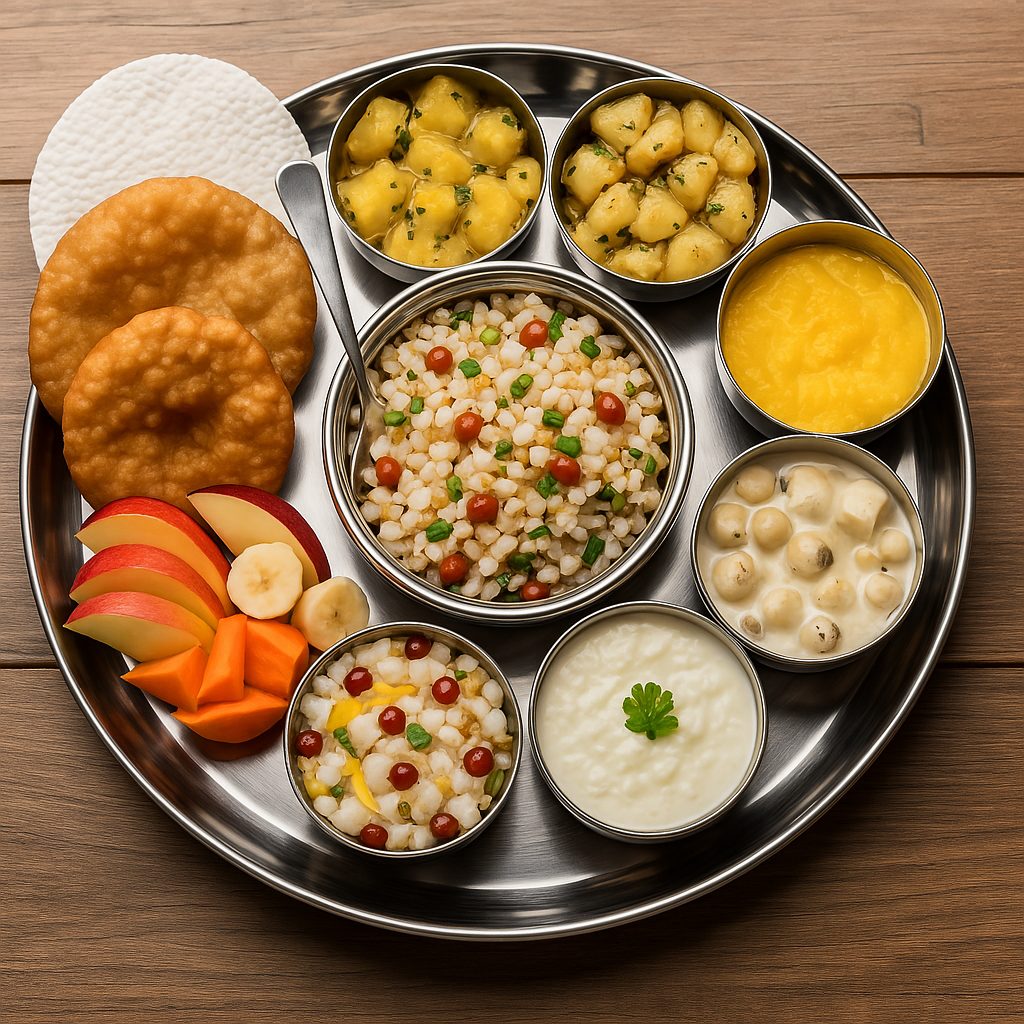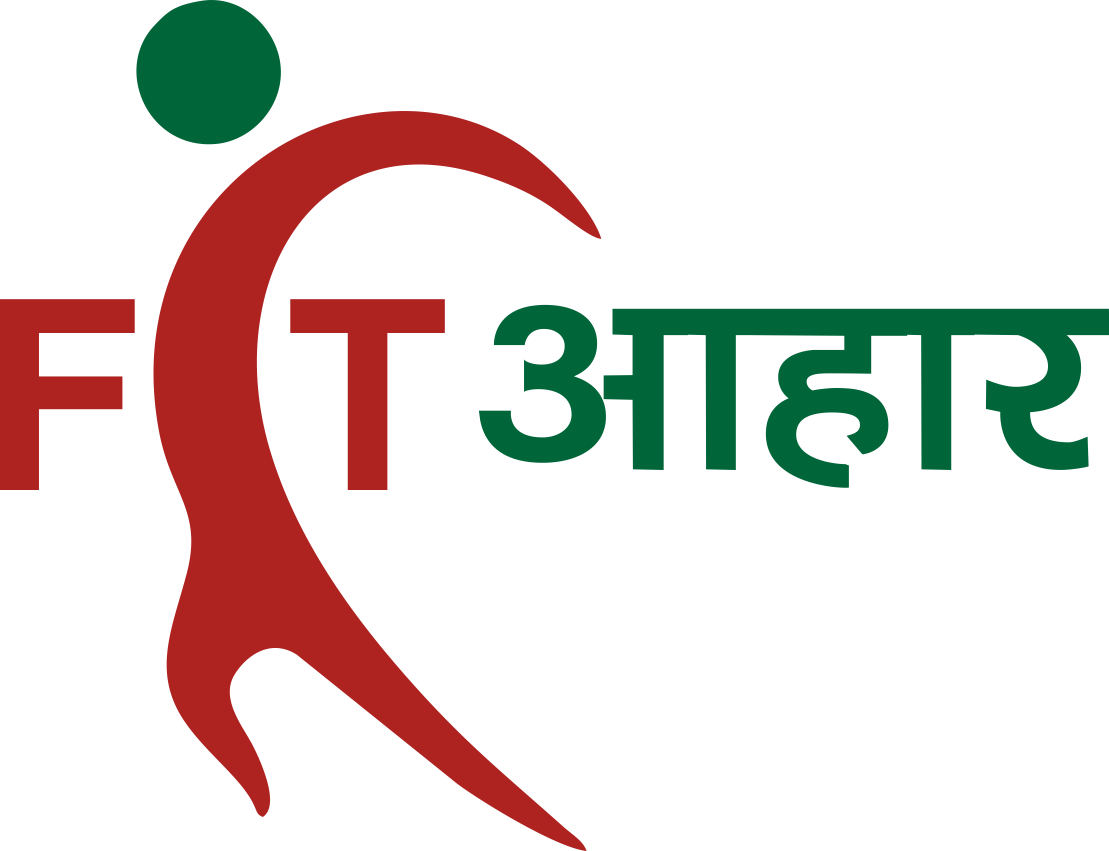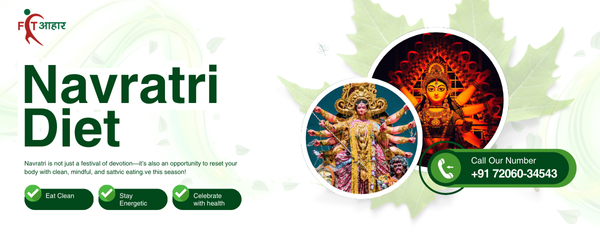Navratri is not just a festival of devotion—it’s also an opportunity to reset your body with clean, mindful, and sattvic eating.
Why Navratri Diet Matters?
Navratri is one of the most celebrated festivals in India, known for its spiritual significance, fasting rituals, and traditional food. While fasting during Navratri is an act of devotion, it can also serve as a natural detox for your body when done the right way.
But here’s the catch—many people unknowingly make unhealthy food choices during fasting, such as consuming fried snacks, excess sugar, and packaged foods. This not only defeats the purpose of fasting but also causes bloating, fatigue, and weight gain.
In this blog, Clinical Nutritionist Himani Bansal from Fit Ahar shares a complete guide to a healthy Navratri diet that will keep you energized, light, and spiritually focused throughout the festival.
The Principles of a Navratri Diet
- Sattvic Food – Focus on purity, plant-based meals, and fresh ingredients.
- Light and Energizing – Avoid heavy meals that make you sluggish.
- Hydration – Drink enough water, coconut water, or herbal teas.
- Balanced Nutrition – Include proteins, complex carbs, and healthy fats.
Foods Allowed During Navratri Fasting:

- Fruits – Bananas, apples, papaya, pomegranate, musk melon, watermelon.
- Vegetables – Potatoes, sweet potatoes, arbi, cucumber, bottle gourd, pumpkin.
- Grains & Flours – Singhara atta (water chestnut flour), Kuttu atta (buckwheat flour), Rajgira atta (amaranth flour).
- Protein Sources – Sabudana (tapioca pearls), paneer, milk, yogurt.
- Healthy Fats – Nuts, seeds, ghee, coconut.
- Natural Sweeteners – Honey, jaggery, dates.
Foods to Avoid During Navratri:
- Onion & garlic (tamasic foods).
- Wheat, rice, refined flour.
- Packaged foods, chips, fried snacks.
- Excess sugar or sweets made with refined sugar.
Navratri Diet Plan:
Early Morning
- Warm water with lemon or soaked almonds.
Breakfast
- Sama rice porridge with nuts.
- Fruit bowl (papaya + pomegranate).
Mid-Morning Snack
- Coconut water or herbal tea.
Lunch
- Kuttu ki roti with aloo sabzi.
- Cucumber raita.
Evening Snack
- Roasted makhana with green tea.
Dinner
- Lauki sabzi with singhara atta roti.
- A glass of buttermilk.
Healthy Navratri Recipes to Try
1. Sabudana Khichdi
Light, filling, and packed with energy. Cooked with peanuts and mild spices.
2. Makhana Kheer
A sweet treat made with foxnuts, milk, and jaggery instead of refined sugar.
3. Kuttu Pancakes
Wholesome pancakes made with buckwheat flour, ideal for breakfast.
Tips to Stay Healthy During Navratri
- Avoid fried snacks like chips and pakoras.
- Prefer baked or roasted snacks.
- Keep portion sizes small but frequent.
- Stay hydrated with coconut water, lemon water, or ajwain water.
- End your fast with light, home-cooked meals.
Benefits of a Navratri Diet:
- Detoxifies the body
- Improves digestion
- Promotes weight loss
- Increases energy levels
- Enhances focus and spirituality
Conclusion:
Navratri is the perfect time to nourish your body with wholesome foods while staying spiritually connected. A sattvic diet not only supports your fasting routine but also helps in long-term health goals like weight management, hormonal balance, and improved immunity.
With the right choices, your Navratri fast can truly become a festival of health and vitality.
Want a personalized Navratri diet plan for weight loss, PCOS, thyroid, or overall health? Connect with Clinical Nutritionist Himani Bansal at Fit Ahar and start your journey to wellness today!





